Galápagos Blu-ray Movie
HomeGalápagos Blu-ray Movie 
BBC | 2006 | 150 min | Not rated | Oct 02, 2007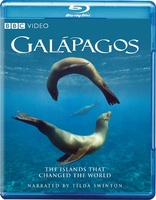
Movie rating
8.2 | / 10 |
Blu-ray rating
| Users | 4.4 | |
| Reviewer | 3.5 | |
| Overall | 3.5 |
Overview
Galápagos (2006)
The inspiration for Darwin's theory of evolution, the Galápagos Islands are a living laboratory, a geological conveyor belt that has given birth to and seen the death of many species of plants and animals. As the western islands rise up from the sea offering a chance of life, the eastern islands sink back beneath the waves guaranteeing only death. Between the two are the middle islands; fertile, lush land in its prime that contains an incredible diversity of life. Nowhere else on the Earth are the twin processes of creation and extinction of species so starkly apparent... see it all unfold before your eyes in this stunning series filmed entirely in high definition from the BBC and the National Geographic Channel.
Starring: Tom Hiddleston, Stacy KeachNarrator: Tilda Swinton
| Documentary | Uncertain |
| Nature | Uncertain |
Specifications
Video
Video codec: VC-1
Video resolution: 1080i
Aspect ratio: 1.78:1
Original aspect ratio: 1.78:1
Audio
English: Dolby Digital 2.0 (448 kbps)
Subtitles
English SDH
Discs
25GB Blu-ray Disc
Single disc (1 BD)
Playback
Region free
Review
Rating summary
| Movie | 5.0 | |
| Video | 4.0 | |
| Audio | 2.0 | |
| Extras | 0.0 | |
| Overall | 3.5 |
Galápagos Blu-ray Movie Review
A stellar "cousin" to Planet Earth in tone, this documentary looks mighty fine on Blu-ray.
Reviewed by Lindsay Mayer June 17, 2008There is little wonder why a humble group of Pacific islands - el archipielago de Colón –
continue to capture the attention and fascination of so many, throughout the centuries of
contemporary human history. The Galápagos islands, born of fire, shaped by the sea, and inhabited
by the fortunate and the hapless, are truly a biological microcosm and a geologic
phenomenon.
It is not known if there were ever any human visitors to these lonesome isles until the 16th
century, when Tomás de Berlanga, the bishop of Panama, accidentally sailed into them in March of
1535 when journeying to Peru. He later wrote of a cursed and infernal place – to his eyes, a hell on
Earth. The harsh and highly variant climates of the islands certainly seem forsaken upon first
impression. But as this thorough BBC documentary attests, the unique nature of these glorified
rocky outcroppings is revealed upon further exploration.
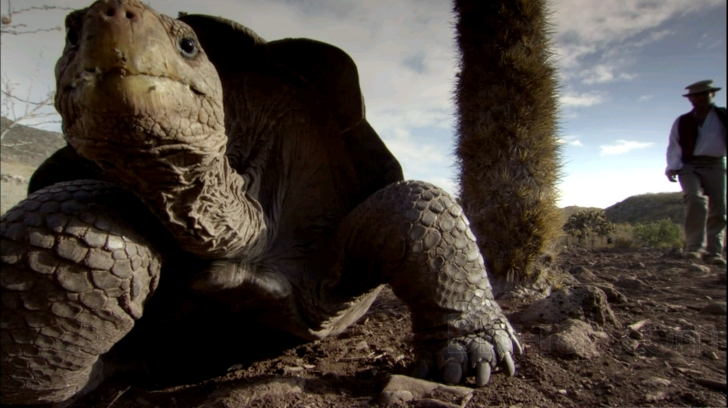
A young Charles Darwin explores the peculiar island residents, including this giant tortoise.
Through impressive camerawork and Tilda Swinton’s engrossing narration, the history and characteristics of many of the major islands – from Isabela, the largest, and with a shape not unlike an anchored seahorse, to the eastward islets of Genovesa and Espańola – are depicted at length. Each is its own identity, with its own ecosystem of specialized flora and fauna; life forms that have had to adapt to the available resources. The islands themselves are highly individual due to the whims of the ocean and the boiling earth beneath it. Multiple Pacific currents have different effects on Galápagos, including the Cromwell from the west, which dredges up nutritious deep sea microorganisms that go on to feed a slew of marine species. The Panama current from the northeast leads to less marine abundance, but brings warmer weather and increased rainfall. The currents are dominant at different periods of the year, and wildlife on the islands is very dependant on this ebb-and-flow cycle.
In addition, the Galápagos are positioned over a geologic “hot spot,” where volcanic activity occurs in the middle of a tectonic plate. As underwater volcanoes erupt, and magma accumulates enough to form dry land, the eventual island of fresh igneous rock travels roughly southeast, in a “conveyer belt” fashion as the ever-active tectonic plate upon which it rests shifts in that direction. At first, these volcanic deposits are completely barren, and prohibit the presence of most life. Hardy pioneers, like cacti, eventually take hold and begin to form some semblance of organic matter on the surface. Over time, other plants follow, as well as a handful of creatures that have adapted to the conditions of each island as they slip slowly southeast, becoming more fertile as they go.
It is this specialization, particularly among animal life, that so intrigued the young naturalist Charles Darwin, who visited the island in September of 1835 – a full 300 years after Tomás de Berlanga. Spending five weeks sailing and mapping the islands with the crew of the HMS Beagle, Darwin explored the isles, making notes and collecting specimens as he went. Galápagos is populated by a scant few species – creatures that randomly came upon the archipelago by wing, by fin, or by washing up ashore, as the case probably was with the reptilian life. This scant handful blossomed into a variety of unique species – if an ecological niche existed, it was eventually filled by the hardy descendents of those marooned individuals. Finches and mockingbirds thrive, each type having learned ingenious tricks for procuring certain food sources. Iguanas have taken to land and sea, while the namesake giant tortoises have uniquely shaped shells according to the food supply of their particular island. Raptors, such as hawks and owls, prey upon dragons and stalk their victims like cats. Flowers bloom universally yellow in the brief Galápagos spring because their sole pollinator option, the black carpenter bee, is attracted to golden hues alone.
Darwin’s observations, especially of the taxidermed mockingbird specimens that he took care to label and categorize, sparked an epiphany that would lead to his publication of the monumental book The Origin of Species in 1859. In all the years and hullabaloo that followed this landmark text on the theory of evolution, Darwin always made one fact pointedly clear – that the Galápagos islands were the source and inspiration of his findings.
Though the islands have been ravaged by man’s actions for centuries – over 200,000 giant tortoises were slaughtered for meat in a span of 200 years, for example – they have remained largely the same due to their isolation, and their current protected status. 30,000 people, as well as a variety of introduced plants and animals, live on the islands today. Thousands more come to tour. Strictly enforced regulations keep the human interference at bay, and other measures – like the intense eradication efforts to reduce the feral goat population – help to maintain the fragile balance of native wildlife on this delicate microcosm of an ecosystem. And if we as a species can demonstrate responsible stewardship of this unique jewel of a place, perhaps that bodes well for the planet – and ourselves, as a whole.
Galápagos Blu-ray Movie, Video Quality 
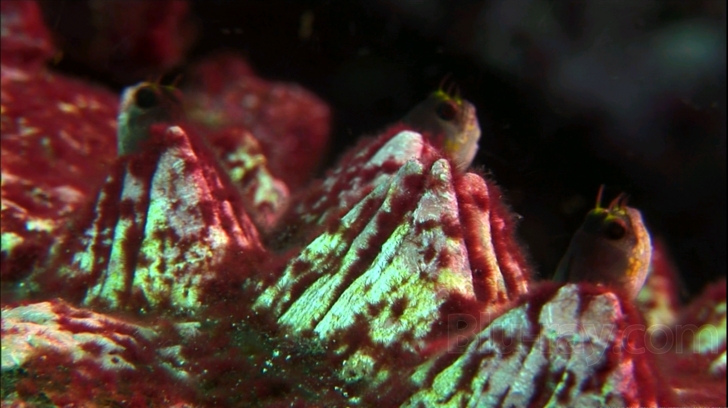
Averaging around 20 Mbps, Galápagos sports an interlaced VC-1 encoding, even though the
packaging erroneously states it is formatted in full 1080p. The material was sourced at 1080i 50Hz
from the BBC, which was then converted to 1080i 60Hz for BD. The documentary looks
surprisingly good - much like its global scale cousin, Planet Earth. There is great care taken by the
filmmakers to capture an extraordinary amount of detail in their subjects, and extreme close-ups
are plentiful throughout. Every feather and rough, horned hide depicted has a fine amount of
detail, and every feature of a slender garden eel or minute goby fish is apparent, and makes for
excellent repeat viewing - if only to catch all the detail!
For all of its visual appeal, however, one can't help but wonder what this title might have looked like
had it been able to utilize a full 1080p, high-bitrate spec. The picture did not look digitally "scrubbed
clean," thank goodness, although there still seems to be an ever-so-slight amount of softness that's
likely attributed to an interlaced source. Galápagos has incredibly good picture quality
regardless, and I heartily recommend it.
Galápagos Blu-ray Movie, Audio Quality 
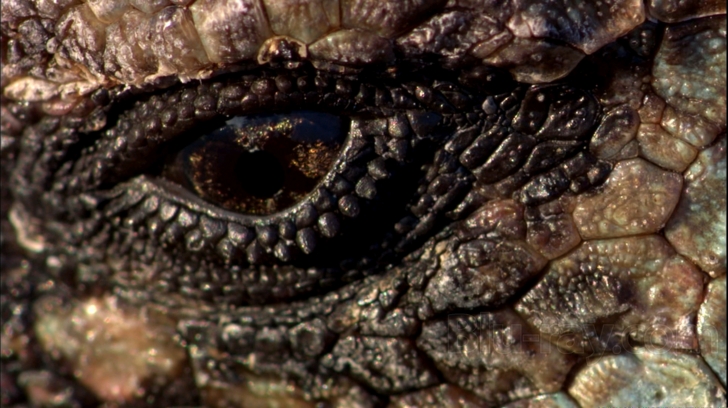
Where Galápagos really falls short is with its audio offering - nothing more than a Dolby
Digital 2.0 option. While it sounds well enough, especially with the fairly generous amount of
narration by Tilda Swinton, it's really a shame that such a wonderfully produced documentary, on a
high definition format, has the sound of your average CD. Ambient effects especially would have
benefit from, at the very least, a DD 5.1 treatment; if not a lossless option, something rarely found
on minor BD releases like documentaries anyway.
As it is - and as would be expected - the audio presentation is very flat, with the sound feeling
condensed into too small a space. As mentioned previously, ambient effects would have added a
fuller and more immersive soundscape to the feature, and an LFE channel could have been an ideal
tool to add rumble and "oomph" to the ubiquitous roaring surf. It's a rather unfortunate decision,
what with Blu-ray's A/V capabilities, but given the educational nature of this title, it suffices well
enough.
Galápagos Blu-ray Movie, Special Features and Extras 
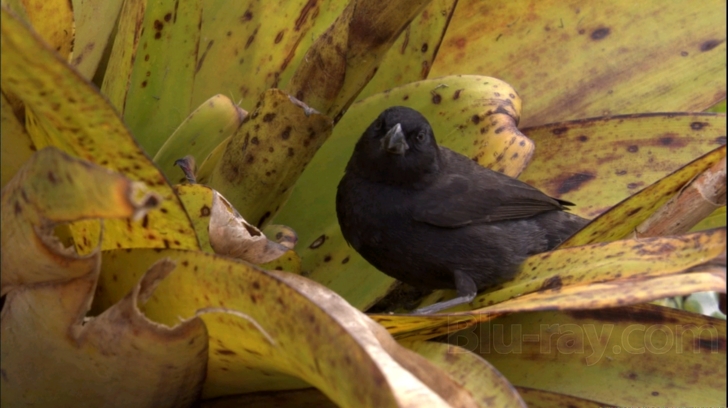
Unfortunately, there are no extras or Easter eggs whatsoever on this release.
Galápagos Blu-ray Movie, Overall Score and Recommendation 

It is incredibly intriguing how things tend to take root in the unlikeliest of places. Fiery, barren rock,
isolated hundreds of miles out into the ocean from the nearest continent, gives way to flourishing
life - when given a few millennia. Life forms that just happen upon a pristine, yet harsh,
environment adapt and thrive in time. And these humble rocks eventually inspired one young,
curious man into a grand epiphany that changed the way humanity looked at life on Earth forever.
The BBC has again done an excellent job of covering the natural wonders of our planet, and this
Blu-ray disc shows the Galápagos archipelago in a beautiful and almost ideal fashion. Its highly
unique and almost alien wildlife will fascinate and mesmerize. Its geologic phenomena and its fiery
heart are awe-inspiring. All around, this is a wonderful documentary and the Blu-ray, while not
perfect, is more than adequate to show off the beauty of these Pacific oddities.
Similar titles
Similar titles you might also like

Ganges
2007

Wild China
2008

Wild Pacific
2008

Nature's Most Amazing Events
2009

Yellowstone: Battle for Life
2009

Madagascar
BBC
2011

Relentless Enemies
2006

Human Planet: The Complete Series
BBC
2011

Earth: The Biography
2007

The Great Rift
2009

Journey to the Edge of the Universe
2009

Life
BBC / Narrated by David Attenborough
2009

Planet Earth
The Complete Series
2006

Africa
2013

Baraka
1992

Frozen Planet
The Original UK Series
2011

Kingdom of the Blue Whale
2009

The Universe: The Complete Season Seven
Ancient Mysteries Solved
2013

Atmospheres: Earth, Air & Water
2008

HOME
2009
